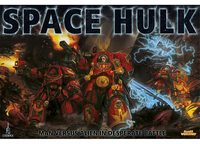
Recently I’ve been reading a lot of fiction, including a few 40k novels. Although very busy with non-gaming projects, one of these was so bad that it has prompted me to come back to my much neglected blog and comment on it. That is not a propitious start to a book review, so right away you know things aren’t going to go well for the book in question: Sons of Fenris by Lightner.
I’m not super familiar with Space Wolves lore, but this is more or less set some time before Ragnar became a Wolf Lord. In fact, the book seems shoved into timespace between other critical events that I’m assuming the other books in the series address.
The basic story here is about one of the Fallen trying to strike a deal with Chaos to embroil the Dark Angels and Space Wolves in civil war. This is not hard to do as they mostly hate each other anyway. Along the way large portions of a mining colony get destroyed, a lot of Marines killed, and even more PDF forces and local indigenous reptilians slaughtered.
Fenris has some general issues. For example, the fact that it’s shoved between more important events shows up in that between the penultimate and ultimate sections is a huge chronological gap, again probably the subject of other books, making the last piece of the story somewhat out of place but clearly pegged on to ram home the theme of redemption. The plot is also by and large very predictable, with almost no mystery or suspense throughout.
Most importantly though, everyone sucks! By this account the Space Wolves are huge idiots! All of them, at every possible opportunity, solve every tactical problem by roaring at their opponents and charging. Sometimes their opponents are Dark Angels, sometimes they’re demons, sometimes they’re innocent refrigerators. It doesn’t matter, all problems are solvable by charging. Just ignore the fact that this usually involves getting shot, hurt, and/or killed in said charge, and if not you probably your buddy. Arguably worse, when not charging they bumble around like every caricatured Viking and/or Dwarf character ever, eating massive amounts of food, getting most of it into their beard, and quaffing copious quantities of alcohol. Meanwhile, as they’re alternating between stuffing their faces and charging things, they talk in painstakingly cliched, stilted, long winded and epic poem-styled speech patterns that are sure to make their opponents want to charge them. I did. Beyond that, although not as annoying, the Dark Angels and basically all other characters are similarly flat, cliched, uninspired.
All in all, there’s not a ton going on in this book that’s to like. It’s a clear problem when the thing I’m most excited about after reading a book is some of the terrain it mentions. As far as I’m concerned, the best part of this book was the jungle temple, but even that isn’t particularly original or interesting! All in all, Sons of Fenris: To be avoided…
 Jason and I got to play two rounds of the new Space Hulk yesterday, alternating sides on the short first mission. For all the hype on the Internet about that mission being a suicide run for the Marines, clearly those people just need to find some better Sergeants…
Jason and I got to play two rounds of the new Space Hulk yesterday, alternating sides on the short first mission. For all the hype on the Internet about that mission being a suicide run for the Marines, clearly those people just need to find some better Sergeants…